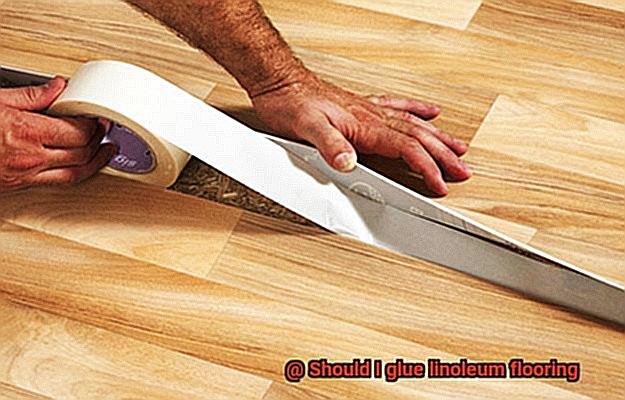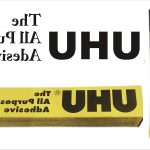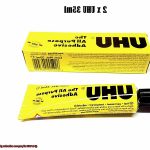Are you contemplating linoleum flooring for your home but unsure whether to glue it down or go with a floating option? It’s a common dilemma, and I’m here to help you navigate the pros and cons.
Let’s dive into the world of linoleum flooring, considering factors like cost, ease of installation, durability, and aesthetic appeal.
By the end, you’ll have all the information you need to make an informed decision that suits your style and budget.
Pros of Gluing Linoleum Flooring:
Contents
- 1 Pros of Gluing Linoleum Flooring:
- 2 Cons of Gluing Linoleum Flooring:
- 3 Benefits of Glueing Linoleum Flooring
- 4 Types of Linoleum Flooring
- 4.1 Sheet linoleum is the most common type of linoleum flooring. It comes in large rolls that can be cut to fit the desired space. Sheet linoleum is typically installed using adhesive or glue. This method provides a seamless and water-resistant surface. It also ensures a stable and secure installation, preventing shifting or lifting over time. With a wide range of colors and patterns available, sheet linoleum offers endless design possibilities.
- 4.2 However, there are instances where gluing linoleum flooring may not be necessary or even recommended. If you’re installing linoleum over an existing floor that’s in good condition and level, a floating installation method may be suitable. Additionally, some manufacturers offer linoleum flooring with a pre-applied adhesive backing, eliminating the need for additional glue during installation. This can be a convenient option for small projects or temporary flooring solutions.
- 5 Advantages of Glueing Sheet Linoleum Flooring
- 6 Disadvantages of Glueing Sheet Linoleum Flooring
- 7 Advantages of Floating Tile Linoleum Flooring
- 8 Disadvantages of Floating Tile Linoleum Flooring
- 9 Factors to Consider Before Deciding Whether to Glue or Not
- 10 Professional Advice for Installing Linoleum Flooring
- 11 Conclusion
- Rock-solid stability: When you glue linoleum flooring down, it becomes one with your subfloor, creating a secure and stable foundation. Say goodbye to worries about shifting or movement over time.
- Built to last: By bonding every inch of the surface firmly, glued linoleum flooring boasts enhanced durability. It can withstand the wear and tear of high-traffic areas like kitchens or hallways without breaking a sweat.
- Peaceful footsteps: Unlike floating options that might sound hollow underfoot, glued linoleum minimizes sound transmission thanks to its direct attachment to the subfloor. Perfect for apartment dwellers or those with multi-story homes seeking some noise reduction.
Cons of Gluing Linoleum Flooring:
- Tricky installation process: Compared to floating alternatives, gluing linoleum requires more effort during installation. You’ll need adhesive and some patience as it can get messy and time-consuming. Plus, removing glued linoleum may pose challenges and potentially damage your subfloor.
- Design limitations: Opting for glued linoleum flooring means committing to your choice since replacing sections or changing the entire floor can be challenging. If you’re someone who loves updating their home frequently, this permanence might not suit your style.
- Higher upfront costs: The traditional method of gluing linoleum flooring often calls for professional installation due to its intricacies. Consequently, it tends to come with a higher price tag compared to the DIY-friendly floating options.
While glued linoleum flooring offers unbeatable stability, durability, and sound reduction, it’s essential to weigh the cons. The complex installation process, limited design flexibility, and higher upfront costs may be factors that sway your decision. Consider your preferences and budget carefully before making the final call on whether to glue or not to glue your linoleum flooring.
Benefits of Glueing Linoleum Flooring
The answer lies in the numerous benefits that glueing linoleum flooring offers. From enhancing durability and moisture resistance to improving aesthetics and stability, there are compelling reasons to opt for this method of installation.
In this article, we will explore these advantages in detail, providing you with valuable insights to make an informed decision about your flooring needs.
Enhanced Durability:
Glueing linoleum flooring creates an unbreakable bond with the subfloor, ensuring that it remains unyielding over time. Unlike non-glued installations, which are prone to shifting and buckling, glued linoleum flooring stays intact even in high-traffic areas or under the weight of heavy furniture. Bid farewell to curled up linoleum edges and embrace a floor that exudes resilience for years to come.
Moisture Resistance:
The application of adhesive directly to the subfloor and securing the linoleum on top creates an impenetrable seal. This seal acts as a protective shield against moisture seepage, making glueing linoleum flooring an ideal choice for spill-prone areas or spaces with high humidity levels, such as kitchens, bathrooms, or basements. Say goodbye to mold and mildew worries as you revel in a longer-lasting linoleum floor.
Noise Reduction:
The adhesive used in glueing linoleum flooring acts as a sound barrier, absorbing and dampening the noise caused by footsteps or other activities. Whether you reside in a multi-story building or yearn for tranquility in your office or apartment, glueing provides you with the ideal solution. Embrace the peaceful ambiance facilitated by reduced noise levels and revel in a more comfortable environment.
Improved Aesthetics:
Glueing linoleum flooring creates a seamless, flawless surface that exudes elegance. Without visible gaps or seams, your floor gains a polished and professional appearance, elevating the overall visual appeal of the room. Maintenance becomes a breeze as dirt and debris find no crevices to accumulate in. Embrace design freedom as glueing allows you to effortlessly combine different patterns and colors, transforming your space into a work of art.
Increased Stability:
Safety takes center stage with glueing linoleum flooring. The strong bond formed by the adhesive ensures that your floor remains steadfast, eliminating the risk of shifting or slipping underfoot. This stability is particularly beneficial in areas where safety is paramount, such as staircases or ramps.
Individuals with mobility issues or those who rely on mobility aids will find solace in the solid and reliable surface provided by glueing.
Types of Linoleum Flooring
Linoleum flooring is a popular choice for homeowners due to its durability, sustainability, and easy maintenance. There are different types of linoleum flooring available, each with its unique features and installation methods. Whether you choose sheet linoleum, tile linoleum, or floating linoleum, you can enjoy a beautiful and long-lasting floor that suits your needs.
Sheet linoleum is the most common type of linoleum flooring. It comes in large rolls that can be cut to fit the desired space. Sheet linoleum is typically installed using adhesive or glue. This method provides a seamless and water-resistant surface. It also ensures a stable and secure installation, preventing shifting or lifting over time. With a wide range of colors and patterns available, sheet linoleum offers endless design possibilities.
Tile linoleum is another popular option. It consists of individual tiles that can be easily installed using adhesive or glue. Tile linoleum provides more design flexibility as you can mix and match different tile colors and patterns to create unique looks. Gluing tile linoleum gives you a more stable feel underfoot and minimizes the risk of moisture seeping through the seams.
Floating linoleum is a newer type of linoleum flooring that does not require adhesive or glue for installation. Instead, it uses a click-lock or interlocking system, similar to laminate or vinyl flooring. Floating linoleum is easy to install and remove, making it a popular choice for DIY enthusiasts. It can also be laid over existing flooring without extensive preparation.
Gluing linoleum flooring offers several advantages. It provides a more secure and stable installation, reducing the risk of shifting or lifting over time. Glued linoleum also helps to reduce noise transmission and provides better insulation. This makes it an excellent choice for high-traffic areas or rooms where moisture may be present, such as kitchens or bathrooms. The adhesive creates a watertight seal, preventing water from seeping through the seams and damaging the subfloor.
However, there are instances where gluing linoleum flooring may not be necessary or even recommended. If you’re installing linoleum over an existing floor that’s in good condition and level, a floating installation method may be suitable. Additionally, some manufacturers offer linoleum flooring with a pre-applied adhesive backing, eliminating the need for additional glue during installation. This can be a convenient option for small projects or temporary flooring solutions.
To ensure a successful installation, it’s important to follow the manufacturer’s guidelines for the specific type of linoleum flooring you choose. Proper installation techniques will guarantee a long-lasting and beautiful floor that will stand the test of time.
Advantages of Glueing Sheet Linoleum Flooring
Today, let’s explore the world of linoleum and dive into the advantages of gluing sheet linoleum flooring. If you’re seeking a durable and stylish option for your home or commercial space, glued linoleum might be just what you need.
Firstly, let’s talk about enhanced durability. When you glue linoleum sheets to the subfloor, you create a robust bond that can withstand heavy foot traffic and resist wear and tear. This makes it perfect for high-traffic areas like kitchens and hallways, as well as commercial spaces where durability is key.
Next, let’s discuss moisture resistance. By gluing linoleum flooring, you create a moisture-resistant barrier between the subfloor and the linoleum surface. Say goodbye to worries about water damage or mold growth in areas prone to moisture, such as bathrooms and basements.
Another great advantage is improved sound insulation. The adhesive used in the gluing process acts as an extra layer of insulation, reducing noise transmission between floors. So if you live in a multi-story building or have noisy neighbors, glued linoleum can help create a quieter and more peaceful environment.
And let’s not forget about the seamless appearance. Glued linoleum provides a smooth and uniform surface without any visible seams or gaps. Not only does this enhance the overall look of your space, but it also makes cleaning a breeze since there are no crevices for dirt to hide.
Stability is another perk of gluing linoleum flooring. Once glued, those sheets aren’t going anywhere. You can say goodbye to tripping hazards or uneven surfaces caused by shifting tiles. Talk about peace of mind.
Last but not least, let’s talk about easy maintenance. Glued linoleum flooring is relatively low-maintenance. Regular sweeping or vacuuming, followed by a damp mop with a mild cleanser, is usually all it takes to keep your floor looking its best.
Disadvantages of Glueing Sheet Linoleum Flooring
If you’re considering gluing sheet linoleum flooring but want to know the downsides before making a decision, you’ve come to the right place. In this comprehensive guide, we will explore the disadvantages of using glue to install linoleum flooring. From the time-consuming and labor-intensive process to potential messiness and limited flexibility, we’ll cover all the factors you need to consider. So sit back, relax, and let’s dive into the sticky truth about gluing sheet linoleum flooring.
Time-consuming and Labor-intensive Installation:
One of the main downsides of gluing sheet linoleum flooring is the meticulous preparation required for the subfloor. This involves cleaning and leveling the surface before applying the adhesive. The additional time and effort involved can significantly lengthen the installation process. If you’re short on time or prefer a hassle-free installation, glued linoleum might not be the best option for you.
Messy Business:
Working with adhesive can be a messy affair. The sticky nature of glue makes it challenging to achieve a clean and seamless installation. Uneven application or excess adhesive can lead to unsightly bumps or ridges in your flooring, compromising that smooth finish you desire.
Difficult Repairs and Replacements:
Once linoleum is glued down, it becomes difficult to remove and replace individual tiles or sections without damaging the subfloor or surrounding areas. This lack of flexibility can be a major drawback if you encounter any issues with your flooring in the future, such as damage or wear.
Limited Flexibility:
Unlike loose-lay or floating linoleum floors that can be easily moved or reinstalled, glued-down linoleum is typically permanent. If you ever decide to change the layout of your space or move to a new location, you may have to leave the linoleum behind or go through the time-consuming and costly process of removing it.
Subfloor Compatibility:
Not all subfloors are suitable for gluing linoleum flooring. Some materials, like concrete or uneven surfaces, may require additional preparation or different adhesive products, adding complexity and cost to the installation process. It’s essential to ensure your subfloor is compatible before committing to gluing linoleum.
Limited Design Options:
When you choose to glue linoleum flooring, your design options are restricted to the pattern or design of the specific linoleum sheet you choose. Loose-lay or floating linoleum floors offer greater flexibility in mixing and matching patterns and colors to create unique designs that suit your aesthetic preferences.
Advantages of Floating Tile Linoleum Flooring
Well, we have some good news for you. Floating tile linoleum flooring is here to save the day, offering a range of advantages that will make you wonder why you ever bothered with glue in the first place.
First and foremost, let’s talk about the installation process. Traditional linoleum flooring requires adhesive or glue to be applied to the subfloor, which can be messy and time-consuming. But with floating tile linoleum flooring, there’s no need for any of that sticky stuff. The tiles simply click together using a unique click-lock system, making installation a breeze. It’s perfect for DIY enthusiasts who want to save on installation costs or for those who just don’t want to deal with the hassle of glue.
Now, let’s move on to versatility. Floating tile linoleum flooring offers a wide range of design options and patterns to choose from. Whether you’re into classic checkerboard or a more modern geometric design, the interlocking tiles allow you to create your desired look and style. You can mix and match colors and patterns to create a truly unique floor that reflects your personal taste and personality.
Durability is another advantage of floating tile linoleum flooring. The tiles are made from a blend of natural materials that contribute to their strength and resilience. They are resistant to scratches, stains, and wear, making them perfect for high-traffic areas like kitchens and bathrooms. Plus, they’re moisture-resistant too. With a moisture barrier backing, floating tile linoleum flooring is ideal for areas prone to water, such as bathrooms and basements. No more worrying about water seeping through to the subfloor or dealing with mold and mildew growth.
Maintenance is a breeze with floating tile linoleum flooring. The smooth and non-porous surface makes it resistant to dirt and grime, so a quick sweep or vacuum and occasional mopping with a mild detergent is all it takes to keep your floor looking its best. No need for refinishing or waxing like with hardwood floors or dealing with the hassle of deep cleaning carpets.
Disadvantages of Floating Tile Linoleum Flooring
Floating tile linoleum flooring offers some advantages, such as easy installation and versatility, but it also comes with its share of disadvantages. It’s important to consider these drawbacks before making a decision. Here are some potential disadvantages to keep in mind:
- Less Stability: Unlike glued-down linoleum, floating tile linoleum flooring is not firmly secured to the subfloor. This can result in slight movement or shifting when walked on, especially in high-traffic areas. Over time, this movement can lead to gaps between the tiles, compromising the overall appearance and durability of the floor.
- Moisture Susceptibility: Although linoleum is naturally resistant to water and moisture, the floating installation method can allow moisture to seep into the gaps between the tiles. This can cause warping or damage to both the tiles and subfloor over time. Therefore, floating tile linoleum flooring may not be suitable for areas with excessive moisture or humidity.
- Hollow Sound: The air gap between the tiles and the subfloor in a floating installation can create a somewhat hollow sound when walked on. This can be less desirable for some people, as it may give a less solid feel underfoot compared to fully glued-down linoleum floors.
- Increased Risk of Scratching: Since the tiles are not firmly secured to the subfloor, they may shift or slide slightly when heavy objects are dragged across the floor. This movement can cause scratches or gouges on the surface of the tiles, detracting from their appearance.
- Difficulty in Repair: If a tile becomes damaged or needs to be replaced, repairing a floating tile linoleum floor can be more challenging compared to a glued-down floor. It may require removing several surrounding tiles before accessing and replacing the damaged one, which is time-consuming and may result in additional costs for materials and labor.
Factors to Consider Before Deciding Whether to Glue or Not
When it comes to installing linoleum flooring, one of the crucial decisions you’ll face is whether to use glue or not. While gluing can provide added stability and durability, several factors need consideration before making a final choice. In this article, we will explore the pros and cons of gluing linoleum flooring and discuss other essential factors that can help you determine the best installation method for your specific needs.
Pros of Gluing Linoleum Flooring:
- Enhanced Stability: Gluing linoleum flooring ensures a secure bond between the subfloor and linoleum, preventing shifting or lifting in high-traffic areas.
- Moisture Protection: Glue creates a barrier against moisture seepage, reducing the risk of warping, buckling, or mold growth in climates with high humidity or extreme temperature variations.
- Longevity: Glued linoleum flooring tends to have a longer lifespan due to the adhesive’s added strength and durability.
Cons of Gluing Linoleum Flooring:
- Difficulty in Replacement: Glued linoleum may pose challenges for frequent replacement or future flooring changes as removing it requires scraping off adhesive residue, which can be time-consuming and may damage the subfloor.
- Cost: The additional cost of adhesive can add up, especially for large areas. Non-glued options may be more budget-friendly.
- Potential Health Concerns: Some adhesives used in linoleum flooring contain volatile organic compounds (VOCs) that emit harmful fumes during installation. If indoor air quality is a concern, choosing a non-glued option may be preferable.
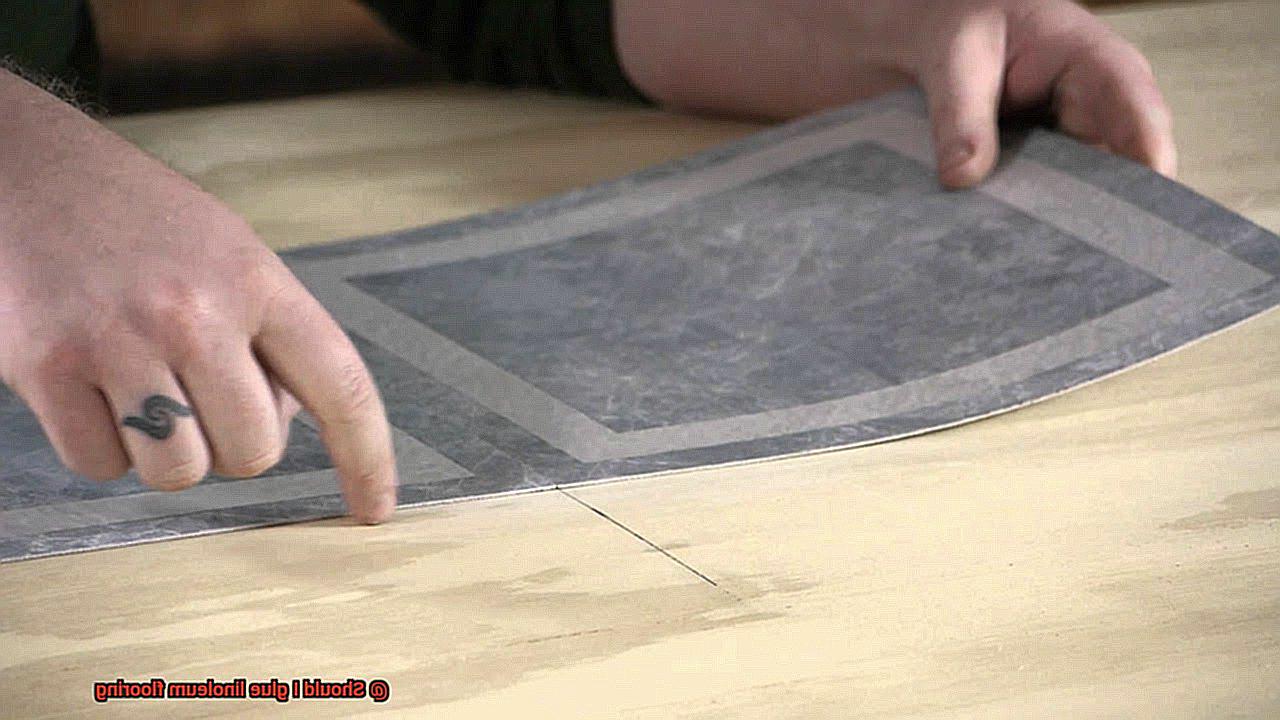
Other Factors to Consider:
- Type of Linoleum Flooring: Determine if your linoleum has a pre-applied adhesive backing or requires additional glue for installation. Follow the manufacturer’s guidelines for proper installation.
- Subfloor Condition: Gluing may be necessary if the subfloor is uneven, damaged, or prone to moisture issues, providing stability and preventing future damage.
- Traffic and Usage: Gluing is recommended for high-traffic areas to prevent shifting or lifting of the linoleum due to foot traffic.
- Climate and Humidity Levels: Gluing can help protect against moisture-related damage in areas with high humidity or extreme temperature fluctuations.
- Personal Preference: Assess your priorities, including ease of installation, ease of replacement, and long-term durability, to determine your personal preference.
Professional Advice for Installing Linoleum Flooring
When it comes to installing linoleum flooring, making the right decision can ensure a successful and long-lasting installation. One of the most crucial decisions you’ll face is whether or not to glue your linoleum flooring. In this article, we’ll explore the factors that should guide your decision-making process, including the type of linoleum, subfloor condition, and personal preferences.
Assessing the condition of the subfloor:
Before diving into the glue-or-no-glue debate, take a moment to inspect your subfloor. Uneven surfaces and imperfections may require gluing to create a smooth and stable foundation for your linoleum. If you’re dealing with an existing floor that’s in good condition and has no moisture issues, a floating installation method may be an option without the need for glue. However, it’s important to note that if you choose to float the linoleum, make sure the subfloor is clean, dry, and level.
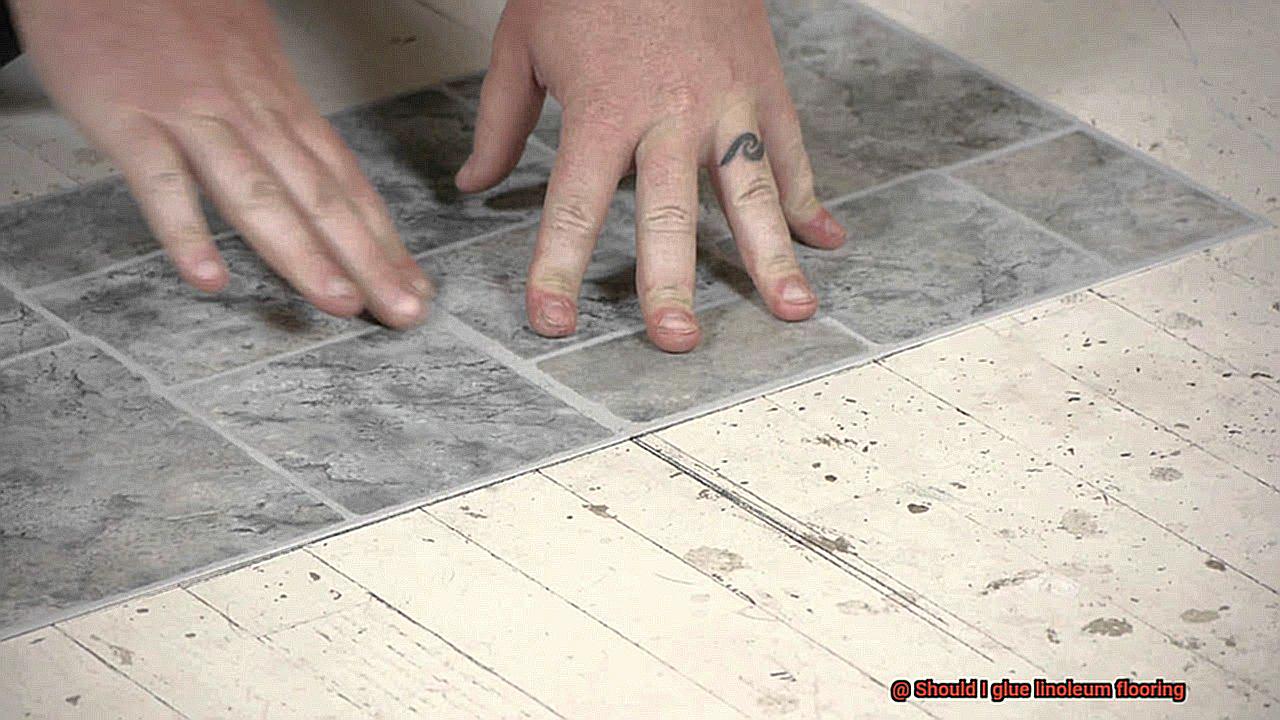
Consider the type of linoleum:

Different types of linoleum come with varying adhesive requirements. Some linoleum products come with pre-applied adhesive backing, eliminating the need for additional glue. However, if you’re opting for traditional linoleum sheets or tiles without adhesive backing, you’ll likely need to use glue. It’s essential to choose a high-quality adhesive specifically designed for linoleum flooring to ensure a strong and durable bond.
The benefits of gluing linoleum:
Gluing linoleum flooring offers additional stability, reducing the risk of movement or shifting over time. It also acts as a barrier against moisture seepage that could damage your flooring. When applying the adhesive, make sure to follow the manufacturer’s instructions carefully, applying an even layer without excess or shortage. Using a roller to remove air pockets and ensure proper adhesion is highly recommended. Keep in mind that gluing is more time-consuming and labor-intensive than other methods, requiring thorough surface preparation and sufficient drying time.
Personal preferences:
Your personal preferences matter. If you value versatility and easy changes, a non-glued installation may be more suitable for you. With a floating installation, you can easily remove or replace the linoleum if needed. On the other hand, if stability and longevity are your top priorities, gluing is recommended. Glued linoleum tends to be more resistant to wear and tear, making it an excellent choice for high-traffic areas.
pkOMxSPcTtE” >
Conclusion
When it comes to the question of whether or not to glue linoleum flooring, the answer is a resounding yes.
Gluing linoleum flooring provides numerous benefits that make it a worthwhile choice for any homeowner. By securely adhering the linoleum to the subfloor, you can ensure its longevity and durability.
No more worrying about loose edges or shifting tiles. Gluing also helps to create a seamless and smooth surface, enhancing both the appearance and functionality of your flooring.
Additionally, glued linoleum is resistant to moisture and water damage, making it an ideal option for kitchens, bathrooms, and other high-moisture areas. So why settle for anything less than perfection?
Take the time to properly glue your linoleum flooring and enjoy all the advantages it brings.

